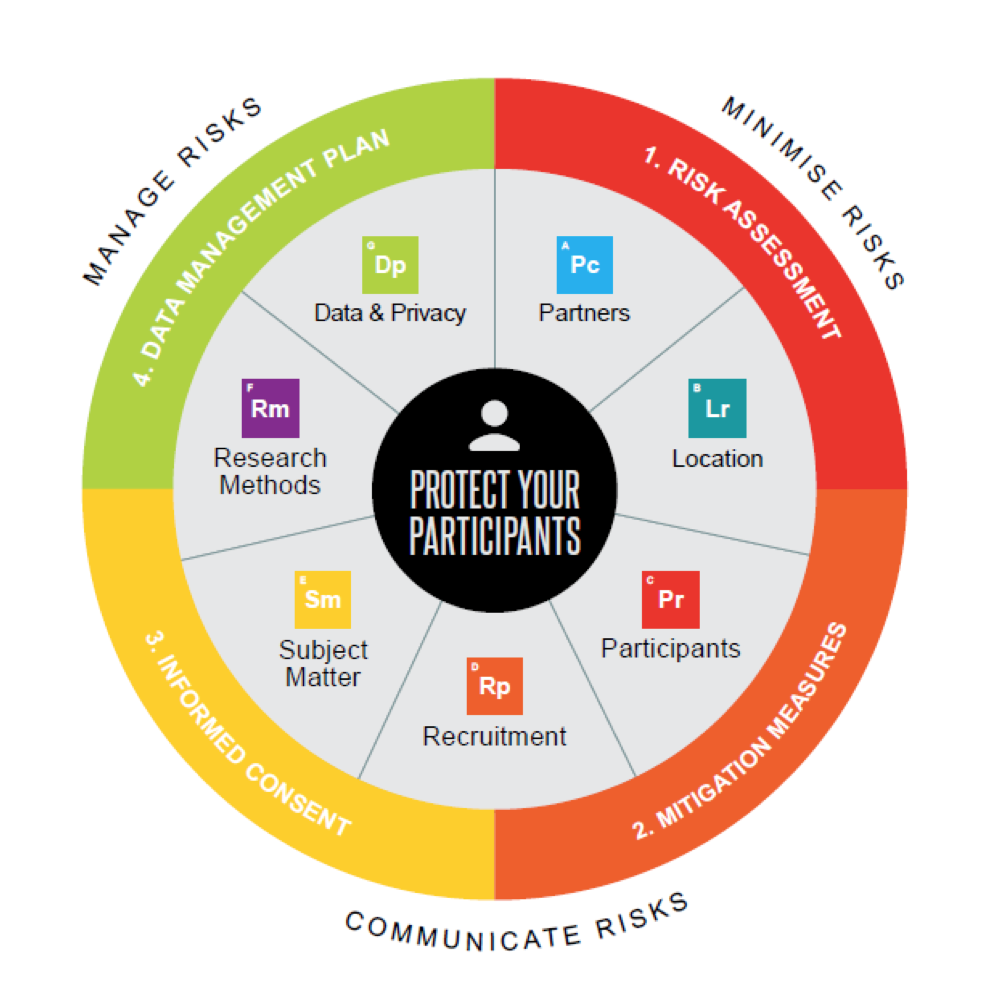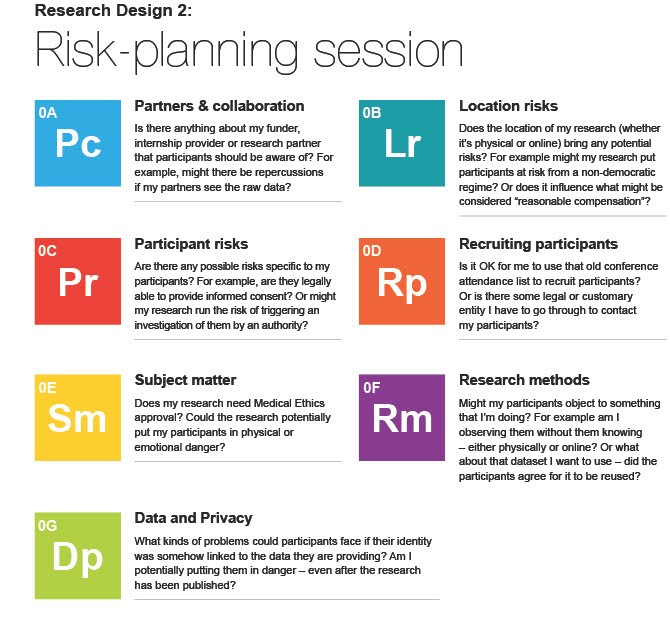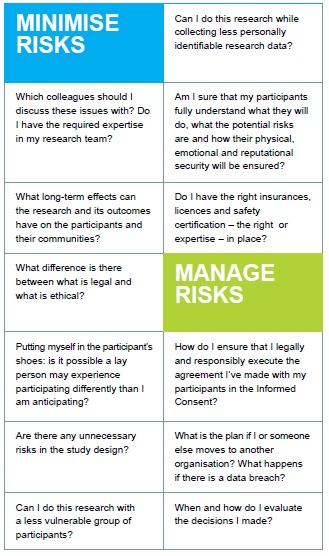Research Design 2: Risk-planning Session
To help you identify the kinds of risks and mitigating measures that your research goals or methods might expose your Human Research Subjects to, we strongly advise organising a risk-planning session early on in your research design. You can of course organise such a session with just you and your brain, but with a small diverse team, who have a range of expertise, and can role-play different stakeholders (including researchers and Research Subjects), you’ll be more likely to elicit the full range of possible risks and consider a wider range of mitigating measures.
The TU Delft Risk-planning Tool: Managing Risk in Human Research, can help you to prepare and run this session, providing prompting questions on common sources of risk and the kinds of mitigation measures that can help to minimise them. You can share the tool digitally or print out for reference during your session.
Using the risk-planning tool
You can use the tool to help you interrogate different stakeholders about any potential risks and mitigating measures. By the end of even a brief session, you should have produced a draft Risk Assessment and Mitigation Plan, which will later for the basis of your application for Human Research approval. You can also capture any remaining queries which might require input from additional internal or external experts.
-
Research Design 1: Planning for Risk
This first step gives you an overview of how to approach risk management in your research design. At the centre is the goal of protecting your participants, and throughout the process is the need to align:
- the risks you identify
- the mitigating steps you will take
- what you will communicate to your participants, and
- how you manage the risks in practice
To help with identifying possible risks, we’ve identified seven main Risk Factors, such as where your research will take place, who your participants are and what you are asking from them. You can click on any of these Risk Factors to find out more.

-
Research Design 2: Risk-planning session
Step 2 provides a series of questions which you can use to elicit possible risks, across the seven Risk Factors, as perceived by different stakeholders (such as funders, researchers and different groups of participants).
You can enrich this conversation further by clicking on any of the seven Risk Factors to go to a list of 34 prompting questions. If you’ve been through these questions in your risk-planning session then seeking approval for your research should be easy!
Step 2 also gives some examples of cross-cutting questions which could be relevant to any of the Risk Factors. These questions can help you to minimise or remove some potential risks, and to think about how, in practice, you will actually manage any remaining risks.


Capturing your risk-planning discussion
It’s possible that during your risk-planning discussion you identify questions for which you do not currently have the right answers. We’ve developed a template to help you capture your discussions and flag any additional expertise you might need to consult before you can finalise your research design.